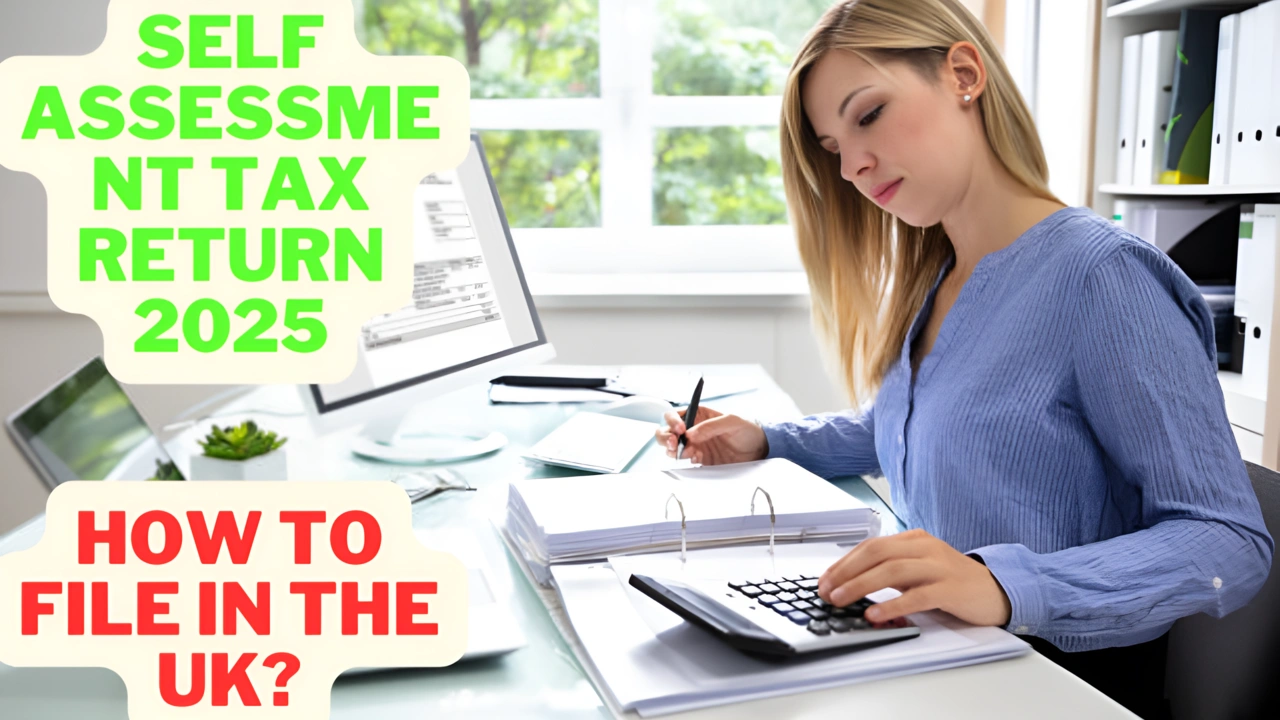Self Assessment Tax Return 2025: According to figures released by HMRC earlier in 2024, over 1.1 million people filed their self-assessment tax return late. Even more interesting was that more than 61,000 people submitted their returns between 4-5pm on the deadline day, and approximately 33,000 left it until as late as 11pm. This clearly indicates that many people leave the task until the last possible moment.
But don’t worry. With the right expertise and a clear, structured approach, you can tackle this task with confidence. From registering for self-assessment to completing your tax return, we’ll guide you through the entire process.
Imagine the peace of mind knowing your tax responsibilities are properly managed. No more scrambling at the last minute or feeling uncertain about deductions and deadlines. Keep reading as we walk you through how to file a self-assessment tax return, stay compliant with legal obligations, and potentially optimize your tax situation.
What is a Self-Assessment Tax Return?
A self-assessment tax return is a system used by HM Revenue and Customs (HMRC) to collect income tax from individuals. While tax is automatically deducted from wages and pensions, people with additional income sources—such as self-employment, rental income, or capital gains—must report these earnings through a self-assessment tax return. This allows HMRC to calculate the total tax liability, ensuring the correct amount is paid. Missing deadlines or failing to report accurately can lead to penalties or interest charges.
Who Needs to File a Self-Assessment Tax Return?
You must file a tax return if, during the previous tax year (April 6 to April 5), you were self-employed as a sole trader earning more than £1,000 (before applying any tax reliefs), or if you were a partner in a business partnership.
Self-employment tax applies whether you worked full-time or part-time and can include individuals like:
- Freelancers
- Consultants
- Service providers (e.g., hairdressers, beauticians)
- Sole traders in construction (e.g., plumbers, electricians, plasterers)
If you’re a freelancer wondering about how self-assessment applies, don’t worry—we’ve created a separate article to guide you.
If you’re already familiar with self-employed tax returns and are looking to register for self-assessment, we’re here to help.
What Income is Subject to Self-Assessment Tax?
When filing your self-assessment, you must include all taxable income for the year. This includes:
- Income from self-employment
- Employment income (if earning over £100,000)
- Dividend income
- Interest on savings exceeding the allowance
- Rental income
- Capital gains
- Income from trusts or foreign income
Make sure to keep records of all income sources to avoid missing any details—HMRC imposes penalties for incomplete returns.
When is the Deadline for Filing a Self-Assessment Tax Return?
For the tax year ending on the previous April 5, the key deadlines are:
- 5 October: Register for self-assessment if you’re new to the system
- 31 October: Paper tax return deadline
- 30 December: Deadline for online submission if you want HMRC to automatically collect tax owed from your wages or pension
- 31 January: Online tax return deadline and first payment on account due
- 31 July: Second payment on account due
Registering for Self-Assessment
Before you can file a tax return, you need to register with HMRC. This involves obtaining a Unique Taxpayer Reference (UTR) and setting up a Government Gateway account.
How to Create a Government Gateway Account:
- Visit the Government Gateway registration page.
- Choose whether you’re registering as an individual or as an organization.
- Fill in your name and email.
- Create a password.
- Wait for your activation code, which may take up to 10 days by post.
How to Obtain Your Unique Taxpayer Reference (UTR):
Your UTR is a 10-digit code that HMRC uses to identify you. After registering for self-assessment, you will receive your UTR by post (it may take up to 10 working days, or 21 days if you’re abroad). Keep it safe—it’s essential for filing your tax return.
Gathering the Necessary Information
Before filing your self-assessment tax return, gather all the necessary details. The more organized you are, the easier the process will be.
- Personal Details and National Insurance Number Make sure you have your name, address, date of birth, and National Insurance number.
- Income from Employment, Self-Employment, and Partnerships Collect payslips from employment, invoices, bank statements (if self-employed), and partnership profit details.
- Investment Income and Capital Gains If you’ve earned interest, dividends, or sold investments, gather all records, including sale prices, broker fees, and rental income.
- Charitable Donations and Tax Relief If you’ve donated to charity or invested in certain schemes, ensure you have proof of donations or investment details.
Once you have all your documents ready, you can proceed with filing your tax return online.
How to File a Self-Assessment Tax Return Online
Here’s how to fill out your self-assessment tax return online:
- Log Into Your Government Gateway Account Visit the HMRC Self-Assessment login page and enter your credentials.
- Fill Out the Online Form The form has sections for different types of income. Fill out only the relevant sections for you.
- Enter Your Income and Expenses Carefully input your income and business expenses. Double-check everything before moving forward.
- Claim Tax Reliefs and Allowances As you complete the form, be sure to claim all eligible tax reliefs and allowances, such as personal allowance, trading allowance, and mileage claims.
- Check and Submit Review your return for accuracy. Once you’re confident everything is correct, submit it. You’ll receive a confirmation screen with a reference number—make sure to save it for future reference.
Key Takeaways
- Ensure you’re eligible to file and register with HMRC.
- Gather all financial records for accurate reporting.
- File online for convenience and meet the 31 January deadline.
- Stay organized to simplify the filing process.
Calculating Your Tax Liability
Understanding tax bands and rates is essential for calculating how much you owe. For the 2023/24 tax year, the tax bands are as follows:
- Personal Allowance (up to £12,570): 0%
- Basic rate (£12,571 to £50,270): 20%
- Higher rate (£50,271 to £125,140): 40%
- Additional rate (over £125,140): 45%
When to Consider Hiring a Tax Professional
If you have multiple income sources or a complex tax situation, you might consider hiring a tax professional. An accountant can help you navigate complicated tax rules, optimize your tax reliefs, and ensure everything is filed correctly and on time.
Conclusion
Now you’re equipped with all the essential steps and tips to file your self-assessment tax return confidently. Stay organized, meet deadlines, and claim all your tax reliefs to ensure you pay the right amount of tax. If you need help, consider seeking professional assistance.
FAQs
- Can I file my tax return myself?
Yes, you can file your self-assessment return with the right documents and patience. - What are the steps for self-assessment?
The steps include registering with HMRC, gathering necessary documents, filling out the online form, and submitting it before the deadline.



